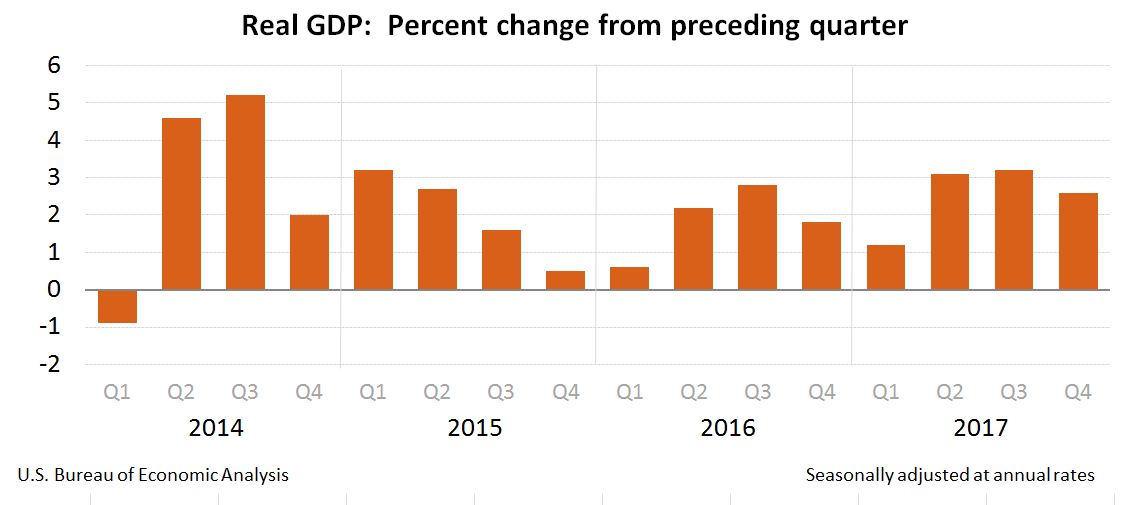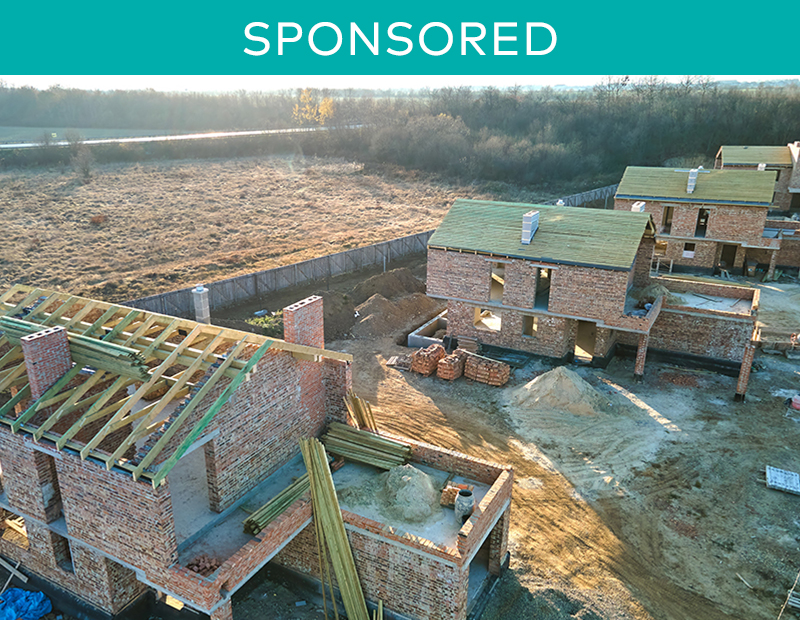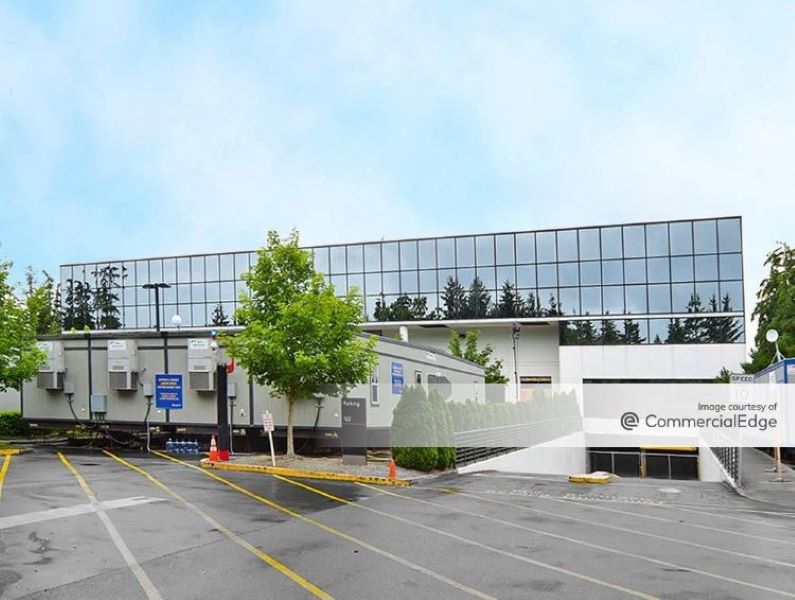Economy Watch: US GDP Slows in 4Q
GDP growth was slower than in the second and third quarters of 2017, but still finished off the year above 2 percent.
By D.C. Stribling, Contributing Editor

Source: U.S. Bureau of Economic Analysis, Gross Domestic Product: Fourth Quarter and Annual 2017 (Advance Estimate)
Real U.S. gross domestic product increased at an annualized rate of 2.6 percent during the fourth quarter of 2017, according to the advance, or first, estimate released by the Bureau of Economic Analysis on Jan. 26. That represents a dip from the third quarter, when real GDP increased 3.2 percent, but later estimates, which will be released next month, tend to be revised upward as more complete data comes in.
The increase in real GDP in the fourth quarter reflected positive contributions from personal consumption expenditures, nonresidential fixed investment (which includes commercial real estate), exports, residential fixed investment, state and local government spending, and federal government spending. Those were partly offset by a drop in private inventory investment. Imports, which are a subtraction in the calculation of GDP, increased.
As a percent of GDP, residential investment—mostly housing development and renovation—increased during the fourth quarter, the BEA reported. Residential investment has recovered from the bottom of the late 2000s recession, but even so, it stands at a little less than 4 percent of GDP, which is about the same as during most earlier recessions. With the exception of the 2010s, residential investment has mostly hovered between 4 percent and 6 percent of GDP since the end of WWII.
Investment in non-residential structures as a percentage of GDP is also a bit lower than earlier historic norms. Currently, the BEA says, it’s a shade less than 3 percent. Non-residential investment has hovered around 3 percent of GDP since after the 1980s, when non-residential investment spiked at more than 5 percent. After WWII, and until the ’80s, non-residential was always more than 3 percent, sometimes as much as 4 percent.







You must be logged in to post a comment.